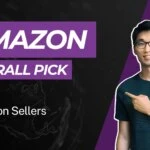What you’ll learn
Are you ready to unlock the secrets of Amazon’s advertising funnel and harness its explosive profit potential?
Look no further because, in this article, we’ll reveal everything you need to know about the Amazon Advertising Funnel and how it can skyrocket your business success.
At Amazon, they have mastered the art of guiding customers through a four-stage marketing funnel that leads to massive profits.
Understanding this powerful strategy allows you to tap into a world of opportunities and take your business to new heights. So buckle up because we’re about to embark on a journey that will give you an edge over your competitors and fulfill your subconscious desire for power.
And don’t worry – we won’t stop there! We’ll also explore how Amazon retains and upsells existing customers, ensuring that once they enter the funnel, they keep coming back for more.
We’ll dive deep into why the marketing funnel is so important in today’s competitive landscape and provide insights on how you can analyze and optimize your own funnel marketing strategy for maximum profitability.
What Are the 4 Stages of the Marketing Funnel?

Welcome to the exciting world of Amazon advertising, where we’ll uncover the secrets of the four stages that lead to explosive profits!
In this first subtopic, we will delve into the four stages of the marketing funnel. The marketing funnel represents a customer’s journey from awareness to loyalty phases, and understanding these stages is crucial for maximizing your success on Amazon.
The first stage is the awareness stage, where potential customers become aware of your product or brand. At this point, capturing their attention and creating interest in what you offer is important.
Utilize compelling ad copy and eye-catching visuals to stand out among competitors. You can effectively reach your desired audience and build brand recognition by targeting relevant keywords and demographics.
Moving on to the consideration stage, customers are now evaluating their options before making a purchase decision.
Here, it’s vital to provide detailed information about your product’s features, benefits, and unique selling points.
Leverage customer reviews and testimonials to establish trust and credibility. Offering competitive pricing or limited-time promotions can also encourage customers to select your product over competitors.
We reach the conversion stage – the moment when a potential customer becomes an actual paying customer.
This is where all previous efforts culminate in a successful transaction. Streamline the purchasing process by optimizing your Amazon listing page with clear calls-to-action and easy navigation.
Make sure shipping options are transparent and customer support is readily available for any questions or concerns.
What is the Purpose of a Funnel (or Marketing Funnels)?
Starting with a well-structured sales funnel is like having a roadmap to guide potential customers toward making a purchase.
A funnel guides individuals through the various stages of the customer journey/ride, from awareness to conversion.
It allows businesses to nurture leads and build relationships with their target audience strategically.
The marketing funnel consists of four stages: awareness, interest, decision, and action. Each stage plays a crucial role in moving prospects closer to becoming paying customers.
At the top of the funnel, awareness is created by capturing the attention of potential customers and introducing them to your service or product.
This can be achieved through targeted advertising campaigns, content marketing, and social media presence.
As prospects move down the funnel into the interest stage, they become more engaged and show genuine curiosity about your offering.
This is an opportunity for businesses to provide valuable information and showcase their expertise.
By addressing any concerns or objections that may arise during this stage, you can further persuade prospects to consider your solution over competitors.
In the decision stage, prospects are on the verge of making a purchase but may still have lingering doubts or questions. Here, it’s essential to provide compelling reasons why your product or service is superior and address any remaining concerns head-on.
By instilling confidence in your offering and presenting irresistible incentives such as discounts or limited-time offers, you can encourage prospects to take action and convert into customers.
What You Need to Know About the Full Amazon Advertising Funnel Strategy

Embark on a journey of strategic enlightenment as we unveil the secret recipe behind Amazon’s powerful full-funnel advertising strategy.
The Amazon full-funnel advertising strategy is a comprehensive approach that targets customers at every stage of their buying journey.
By understanding and leveraging marketing funnel metrics, Amazon optimizes customer journeys to drive explosive profits.
At the top of the marketing and sales funnel, Amazon focuses on creating awareness and generating interest in their products through targeted display ads, sponsored products, and influencer endorsements.
This ensures that potential customers are exposed to relevant products and services early on in their decision-making process. By casting a wide net, Amazon maximizes reach and captures a larger audience.
Moving down the funnel, Amazon employs retargeting techniques to re-engage with customers who have shown initial interest but haven’t made a purchase yet. Through personalized recommendations, tailored emails, and exclusive offers, they nurture these leads toward conversion. This approach not only increases sales but also fosters brand loyalty by providing a seamless shopping experience.
Mastering the art of the full funnel marketing strategy is essential for any business looking to achieve explosive profits on platforms like Amazon.
By strategically targeting customers at each stage of their buying journey and utilizing marketing funnel metrics effectively, brands can maximize their reach and drive conversions.
Furthermore, building brand loyalty through personalized recommendations and exclusive offers ensures long-term success in an increasingly competitive marketplace.
Encouraging Consideration and Comparison
Moving further down the funnel, Amazon’s strategic marketing approach includes personalized email campaigns and targeted ads to remind customers about items left in their cart or suggest complementary products based on previous purchases, resulting in a 20% increase in conversion rates.
During the consideration phase of the customer ride/journey, Amazon understands that shoppers need to feel educated and empowered before making a purchase decision.
By providing thorough product descriptions, customer reviews, and comparison tools, Amazon ensures that shoppers have all the information they need to make an informed choice.
🗣️ Pro Tip: Amazon recognizes that during the consideration stages, customers often engage in competitor research.
To address this, Amazon strategically places sponsored product ads on competitor listings and search result pages.
This increases brand visibility and helps redirect potential customers back to Amazon’s platform for a seamless purchasing experience.
In addition to this data-driven approach, Amazon leverages its vast database of customer preferences and behavior patterns to deliver personalized recommendations.
By analyzing previous purchases and browsing history, Amazon can suggest complementary products that shoppers may be interested in.
This not only encourages cross-selling but also enhances the overall shopping experience by offering relevant options tailored specifically to each individual customer’s needs.
Converting Leads into Customers

Now that we’ve successfully encouraged consideration and comparison among potential customers, it’s time to focus on the next stage of the marketing funnel: converting leads into customers.
This is where the real magic happens and where we can turn those interested prospects into loyal customers who’re ready to make a purchase.
To convert leads into customers effectively, we need to provide them with compelling reasons why they should choose our product or service over our competitors.
Here are four key strategies to help us achieve this:
- Showcase Social Proof: People are more likely to trust a brand when they see that others have had positive experiences with it. We can build trust and credibility by featuring testimonials, reviews, or case studies from satisfied customers.
- Offer Irresistible Incentives: Everyone loves a good deal! Providing exclusive discounts, limited-time offers, or freebies can be powerful motivators for potential customers to take that final step and make a purchase.
- Personalize the Experience: Tailoring our messaging and offers based on customer preferences and behaviors can significantly increase conversion rates. Utilizing data-driven insights, such as past purchases or browsing history, allows us to create personalized recommendations that resonate with each individual.
- Nurture Customer Loyalty: Converting leads into customers doesn’t end with just one purchase. To encourage repeat business and foster long-term relationships, we must prioritize customer satisfaction by providing exceptional post-purchase support, personalized communication, and loyalty programs.
By implementing these strategies at the converting stage of the marketing funnel, we can transform potential customers into loyal advocates who not only continue buying from us but also refer others to do so.
Retaining and Upselling to Existing Customers
To truly maximize our success, it’s crucial to focus on retaining and upselling to our existing customers, ensuring their loyalty, and generating additional revenue through their continued support.
Existing customers are a very valuable asset to any business as they’ve already shown trust in our brand and made a purchase.
We can encourage repeat purchases and increase customer lifetime value by keeping them engaged and satisfied.
One effective strategy to retain loyal customers is by providing exceptional customer service. We should strive to go above and beyond their expectations, promptly addressing any concerns or issues they may have.
This not only shows that we value their business but also builds trust and strengthens the relationship.
🗣️ Pro Tip: Great customer service not only shows that we value their business but also builds trust and strengthens the relationship.
Additionally, offering personalized recommendations based on their previous purchases can help drive upsells and cross-sells, increasing both revenue and customer satisfaction.
Customer testimonials also play a vital role in retaining existing customers. Positive feedback from satisfied customers serves as social proof of the quality of our products or services.
Utilizing these testimonials in our advertising campaigns can create a sense of trust for potential customers while reaffirming the decision of our existing ones to continue supporting us.
Incorporating real-life stories and experiences into our marketing messages helps establish an emotional connection with our audience, further solidifying their loyalty.
By providing outstanding customer service, leveraging personalized recommendations, and utilizing customer testimonials effectively, we can nurture loyal relationships that lead to repeat purchases and higher profits.
Why is the Marketing Funnel Important?

The marketing funnel is crucial because it guides potential customers through the journey/ride from awareness to conversion, ultimately driving business growth.
A well-designed marketing funnel strategy allows businesses to nurture leads and build brand awareness systematically, ensuring that every step of the customer’s journey is optimized for maximum impact.
Here are three key reasons why the marketing funnel is important:
Pathway to Conversion: The marketing funnel provides a clear roadmap for potential customers to follow, from the initial stage of becoming aware of your brand to making a purchase decision. By understanding where customers are in the funnel, businesses can tailor their messaging and offers accordingly, increasing the likelihood of conversion. This targeted approach ensures that resources are focused on those who are most likely to convert, saving time and money while maximizing ROI.
Building Brand Awareness: The full-funnel approach helps create brand awareness at each stage of the customer journey. From generating initial interest through effective top-of-funnel strategies like content marketing and social media advertising to cultivating loyalty and advocacy with personalized bottom-of-funnel campaigns, a well-executed marketing funnel ensures your brand stays top-of-mind throughout the entire process. Businesses can establish credibility, as well as trust with their audience, by consistently delivering valuable content and engaging experiences at every touchpoint.
Data-Driven Decision-Making: Implementing a comprehensive marketing funnel allows businesses to collect valuable data at each stage of the customer journey. This data provides insights into consumer behavior, preferences, pain points, and engagement patterns, which can then be utilized for more informed decision-making processes across all areas of business operations – from product development to pricing strategies. By regularly analyzing this data and adapting your tactics accordingly, you can optimize your marketing efforts for better results.
By understanding why the marketing funnel is important and implementing an effective strategy that encompasses every stage – from creating brand awareness to converting leads into loyal customers – businesses can harness its power for explosive profits.
Analyzing and Optimizing Your Funnel Marketing
Optimizing our marketing funnel involves analyzing each stage to ensure maximum impact and creating a seamless journey for potential customers.
By carefully examining the effectiveness of each step in the funnel, we can identify any bottlenecks or areas that need improvement.
This data-driven approach allows us to make informed decisions on how to optimize our marketing efforts and drive more conversions.
One key aspect of optimizing the marketing funnel is understanding the customer journey.
By mapping out the different touchpoints and interactions a potential customer has with our brand, we can identify opportunities for improvement.
From awareness to consideration and finally conversion, every stage needs to be optimized to guide customers smoothly through the funnel.
We can tailor our messaging and strategies by analyzing customer behavior and preferences at each stage.
Another crucial element of optimizing our marketing funnel is testing and experimentation. We should constantly be testing different variations of ads, landing pages, and calls-to-action to determine what works best for our target audience.
By using A/B testing or multivariate testing methods, we can gather valuable insights into what drives conversions at each stage of the funnel.
This data-driven approach helps us make informed decisions about where to allocate resources and which tactics are most effective in driving results.
Final Thoughts
The Amazon Advertising Funnel is an essential tool for businesses looking to maximize their profits on the platform.
By understanding and implementing the four stages of the marketing funnel – awareness, consideration, conversion, and retention – sellers can strategically target potential customers at each step of their buying journey.
One example that illustrates the power of the Amazon Advertising Funnel is a case study conducted by a small electronics brand.
They utilized Amazon’s advertising techniques to attract new customers in the awareness stage by running targeted ads that showcased their product’s unique features and benefits.
As a result, they saw a significant increase in product views and click-through rates.
In the consideration stage, they further leveraged Amazon’s advertising capabilities by using sponsored products and sponsored brands ads/sponsored display ads to encourage comparison between their product and competitors’.
This not only increased brand visibility but also helped them stand out among similar products in search results.
Moving onto the conversion stage, they optimized their listing content with compelling images, persuasive product descriptions, and positive customer reviews.
By doing so, they were able to build trust with potential buyers and increase conversions significantly.
Finally, in the retention stage, they utilized email marketing campaigns to upsell additional products or accessories to existing customers.
This resulted in higher customer lifetime value as well as repeat purchases.
Comments
Related Posts

10 Profitable Product Categories for Amazon Affiliates 2025
What you’ll learn Amazon is a favorite for experienced and…

Unlock the Secret to a Profitable Automated Amazon Store: How to Build a Hands-Free Income Stream
Ever dreamed of running a profitable Amazon business while sipping…

Master Amazon New Restricted Keywords: A Seller’s Guide to Success
Changes to Amazon’s restricted keywords list have taken a lot…







Leave a Reply